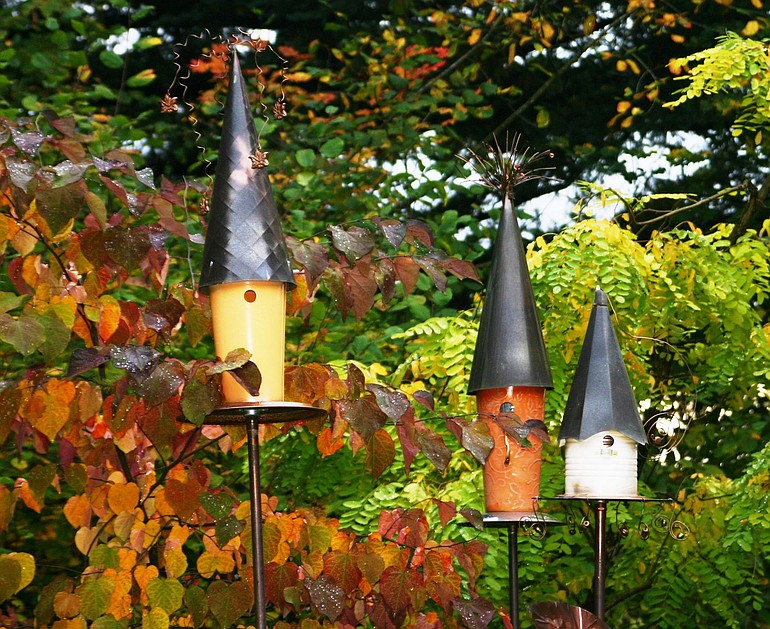I have to admit that I am enjoying the onset of the autumn and the lull in garden expectations that come with this season. In the past two weeks, there have been days when I have done nothing more than wander through my garden. I did not prune, deadhead or pull one weed. I love this time of introspection, of looking deeply into the heart of this garden I have created.
I try my best to remain a beginner in the world of gardening. To garden as if I am a beginner allows me to approach the task at hand with a lighter heart. It frees me from the compulsion of focusing only on perfect results. If the purpose of gardening is to improve our lives, one of the goals of gardening is to enjoy the process. For now, I am happy knowing that all my work up to this point has prepared my garden for the upcoming winter season.
One of the great rewards of remaining a beginner is believing, once again, that all things are possible. No matter what gardening experience we have had up to this point in time, we can continue to learn anew. With the thought of this year coming to a close, I go into the new year with the understanding that every day brings an opportunity to learn something new. With this idea in mind, I’m ready to relax awhile before I take the next step.
Preparing for winter
It’s time to make a decision on how you will overwinter semi-hardy and non-hardy plants in the garden. Let’s be honest, it is a challenge to get certain plants through our long, cold, wet winters. It is also a lot of work to dig every tender plant out of the ground and prepare them for overwinter storage. Because I have such a large garden, I no longer add tender plants to any of my beds and borders.
If you decide to take a chance this year and leave tender plants such as dahlias and gladiolas in the ground, you must follow a few simple rules to give them a better chance of survival. First, wait for the first hard frost to hit the garden. Once this happens, be ready to go into action.
Cut the spent stalks of each plant close to the ground and at an angle so water will run off to the side. Since dahlias have hollow tubelike stems, water can pool up near the crown of the plant and rot the tubers below. This is fatal when combined with freezing rain. Once cut back, cover each bulb or tuber with a thick layer of compost or other organic mulch to help protect them through the winter.
Refrain from using a fertilizer that spurs new plant growth at this time of year. Logically, this is not a time of growth but a time of rest for every plant in the garden. We want all of our plants to enter a state of dormancy for the duration of the winter season.
However, there are a couple of exceptions. You can add an organic, slow-release fertilizer to lawns and to newly planted bulbs to stimulate strong root growth.
Newly planted or transplanted evergreen shrubs and trees, broad-leaved as well as certain conifers, may need protection against the drying effects of seasonal winter sun and wind. This is especially true of any broad-leaved evergreens on the borderline of hardiness or in an exposed planting site. The chief concern is to ensure that water is not lost from the foliage more rapidly than it can be replaced.
With this in mind, it is best to plant semi-hardy camellias, hebes, escallonias and the wonderfully fragrant Daphne odora “Marginata” in a somewhat protected site. Try an area next to a wall or behind a low evergreen hedge for wind protection. You may need to protect the plant with a wrapping of burlap when severe weather conditions threaten. Most important is to continue to water newly established plantings if the plant’s water needs are not being met by natural rainfall.
On mild days
If it’s mild in late November, I will probably spend some time adding a few more plants to the garden. There is always a stash of plants waiting in the wings outside my workshop. On drizzly days, I like to weed. Weeds come out of the wet ground easily, roots and all. At the end of windy days, I rake leaves from the gravel drives and walkways. In late fall, I do whatever it takes to keep me out in the garden.
Robb Rosser is a WSU-certified Master Gardener. Reach him at Write2Robb@aol.com.



